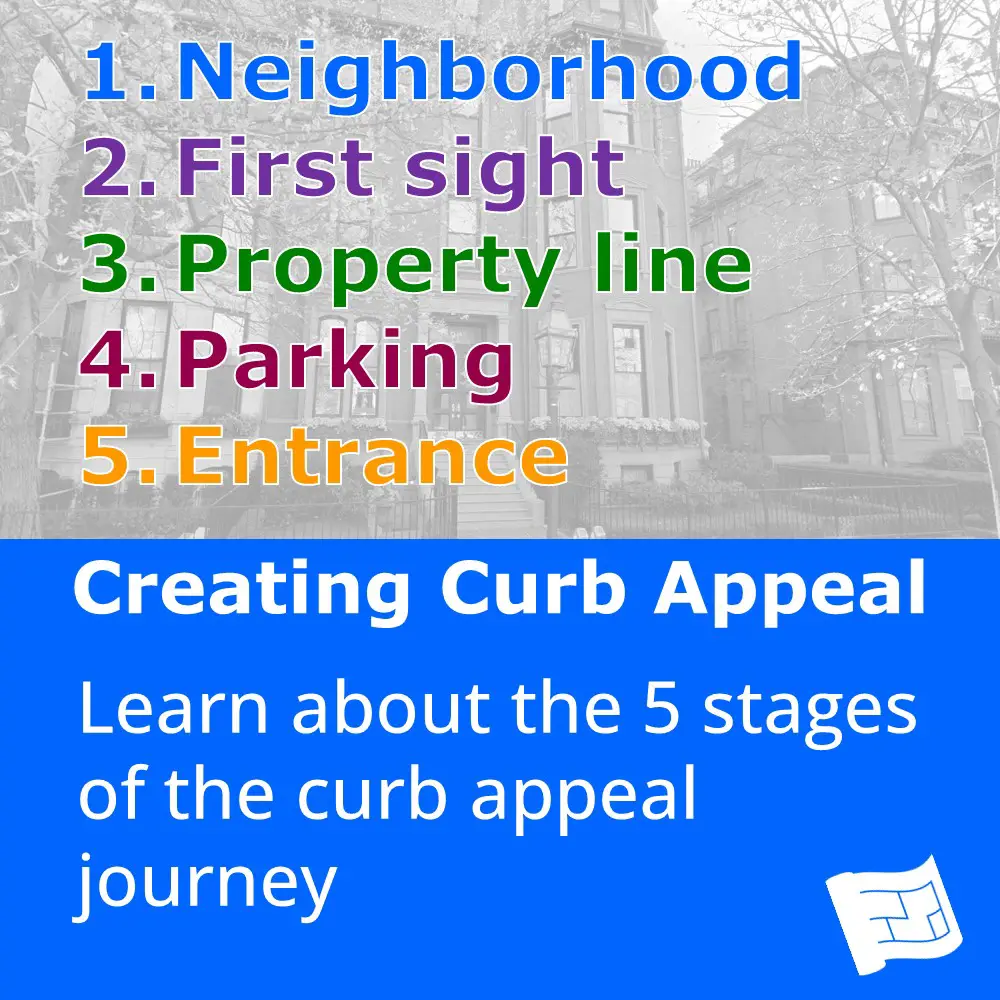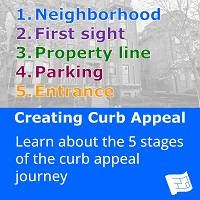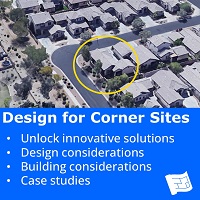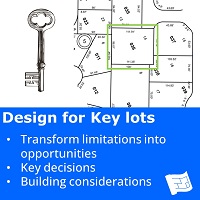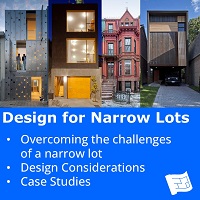- Home
- Your Lot ¦ Plot ¦ Site
- Design for your site
- Curb Appeal
How to create curb appeal
Most of the information on how to create curb appeal concentrates on finishing touches for your home such as your color scheme and planting.
If you're designing a new home, you have the opportunity to design your curb appeal from scratch. If you're in this position there's more to think about than just finishing touches. Let's take a look at how to create curb appeal.
What is curb appeal?
As I'm sure you'll know curb appeal the attractiveness of your home from the curb or sidewalk. It's a term that's used a great deal in the real estate market and it's also an important aspect to consider when you're designing your home.
Why does creating curb appeal matter?
The real estate industry places great importance on curb appeal based on the fact that the first impressions of a home count a great deal towards the price and speed of the sale.
But let us not forget that curb appeal is surely more important for you as the home owner, and the quality of your experience of arriving home day in, day out.
Long after the first impression has come and gone, good curb appeal design will make your spirits lift every time you come home.
Thinking about how to create curb appeal
When thinking about how to create curb appeal most people will imagine how a photo of their home taken from the street will look.
That is certainly one way to think about curb appeal, however I would argue that curb appeal is a more like a journey. In real life, as we approach our homes, we travel through the neighborhood, down the street and then arrive at our homes.
The key to how to creating curb appeal is thinking of it as a more active process of what you and your guests will experience when you approach your home as well as imagining the traditional 'still' photo of your home.
How to design for curb appeal
It's important to realize that there are two main aspects to how we experience curb appeal, and therefore how to create curb appeal. The first and most obvious is the visual attractiveness.
The second is how approaching a home feels. For you as a homeowner is it easy to turn into your driveway, park and get up to your front door? Do guests know where to park and where to go to enter your home? Does your curb appeal design contribute to your home's security and privacy or detract from it?
All these details make the experience of arriving home a pleasure or an experience that is every so slightly annoying each time.
Curb appeal stages
As we've been discussing, curb appeal is about approaching your home and is an active process that can be split into a number of different stages. Which of these curb appeal stages is relevant to your new home?
- Traveling through the neighborhood and coming down your street (most likely possible from both directions)
- First sight - when you first catch a glimpse of your home
- Crossing over your property line
- Parking (if coming by car)
- Approaching your entrance (you may have several entrances for different purposes)
Also, think about all the different ways you or your guests might arrive at your home such as:
- Arriving in a car and parking
- Arriving on foot
- Arriving in a taxi
Go through each way of arriving from your own perspective then think about how your guests will experience it.
It's a good idea to capture some images and video that show what it's like to approach your home to have for reference when you're designing your home.
Let's have a look at each of the curb appeal stages in more detail...
Curb appeal stage 1
Through your neighborhood and down the street
This stage of curb appeal is before you've even set eyes on your home. It's all about what the journey through your neighborhood sets you up to expect.
- Is there a predominant home style in the neighborhood and on your street?
- What mood does the journey through your neighborhood invoke? Think about the pace of the roads, the amount of people out and about, the amount of open space and plants and trees, the style and materials of the buildings.
Thinking about the expectations set up by the journey to your home helps you think about the experience you'll create when your home first comes into view - that 'first sight' moment.
Let's look at some examples....
Consider the expectations that these approach journeys set in three different neighborhoods.
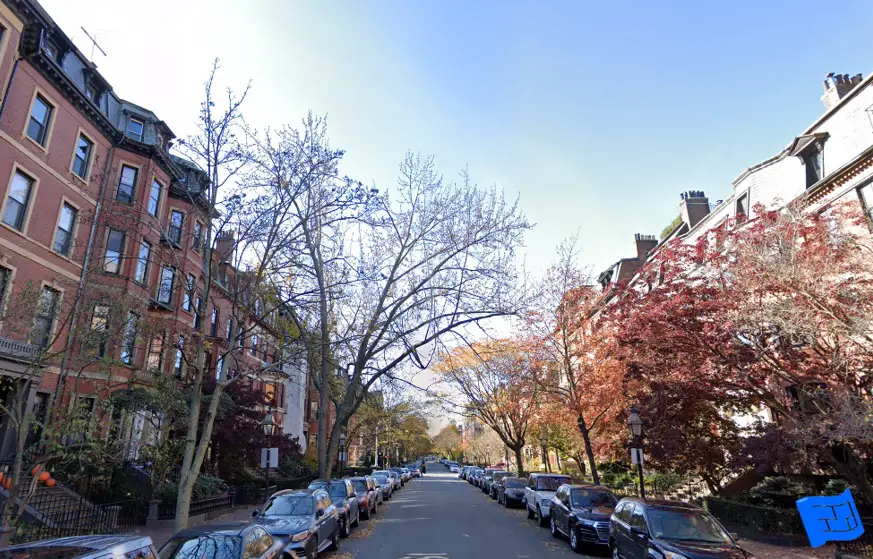 A historical urban neighborhood approach
A historical urban neighborhood approachIn the street above you'd expect all the houses to be of a certain height with steps up to the entrance, built with red brick with beige stone details. Windows are tall windows with the frames painted black.
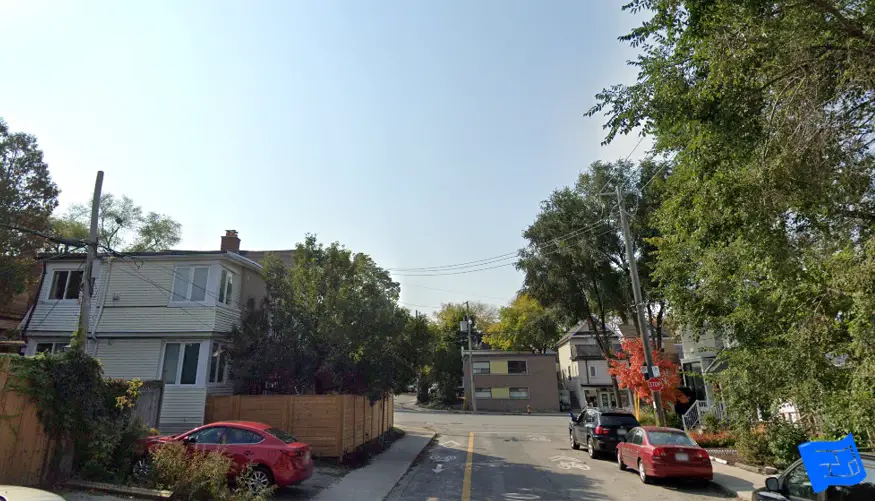 Neighborhood approach in a typical urban neighborhood
Neighborhood approach in a typical urban neighborhoodIn this neighborhood and suburban street, many of the homes have wooden siding painted in various neutral shades and perhaps steps up to a front porch. Most are two stories high with a pitched roof.
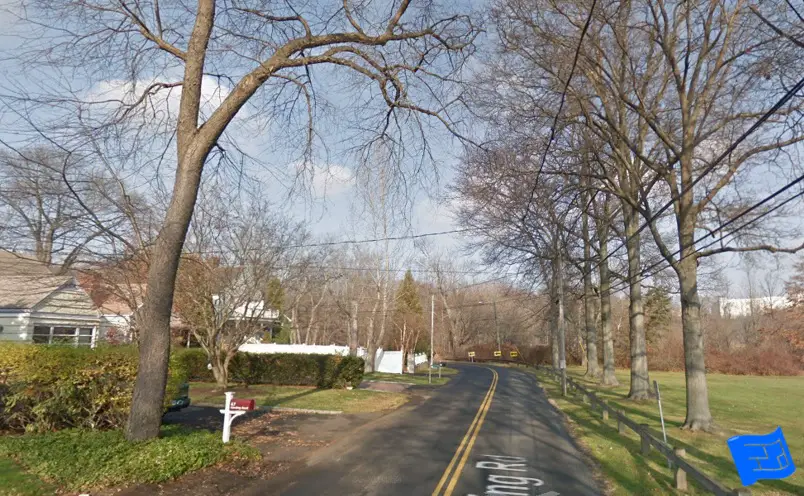 A suburban neighborhood approach
A suburban neighborhood approachFurther out into the suburbs still, there is more of a set back and the quintessential white picket fence makes an appearance.
Can you see how the approach is such an important part of how to create curb appeal? It's all about how expectations are established, then how these are met, or how we're surprised by a difference.
Curb appeal stage 2
First sight
This stage of the approach is when you first catch sight of your home or land and with good curb appeal design it will catch your eye for all the right reasongs. At this stage you're still on the street and depending on your site you'll be able to see all or parts of your home, or perhaps just the entrance to the driveway.
It's the first point at which you have control over how to create curb appeal.
Think about how you want the first sight of your home or land to feel. Do you want the first sight of your home to fit with the mood that traveling through the neighborhood has set up, like a comforting harmony? Or, do you want it to be a challenging or a delightful surprise? Or something else?
Let's keep following our three examples, looking at them in the same order.
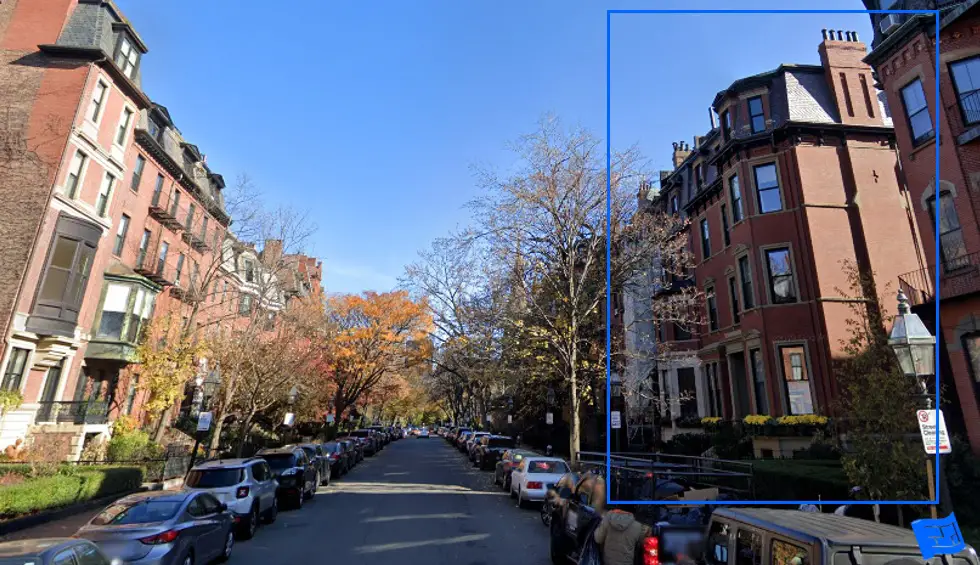
As we approach closer we see the house at an angle rather than facing fully front on.
We can see that it's true to type, in harmony with the predominant style of the neighborhood.
The architect has given the side of the home some interest with the horizontal stone following the bottom of the windows to mark each floor. The chimney breast stands proud of the facade and has a few decorative touches. These design features make what would otherwise be a really boring wall very pleasant on the eye.
Our eye is also drawn to the yellow flowers - planting being one of the finishing touches you can add to the curb appeal of your home.
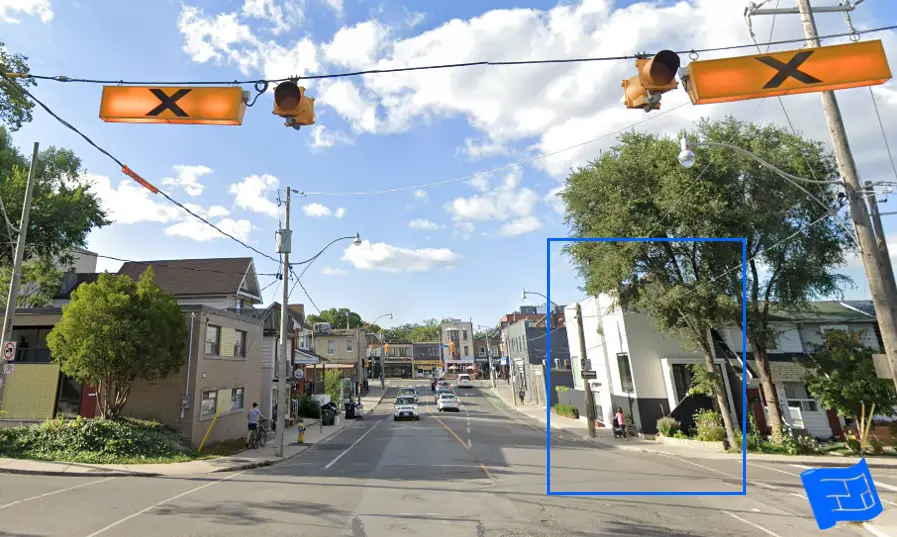 First sight of a modern suburban home
First sight of a modern suburban homeThis home has a more modern style than the surrounding wooden, more traditional homes, and yet blends in with the more commercial buildings ahead on the main street.
For me it reads more like a warehouse than a house from this angle.
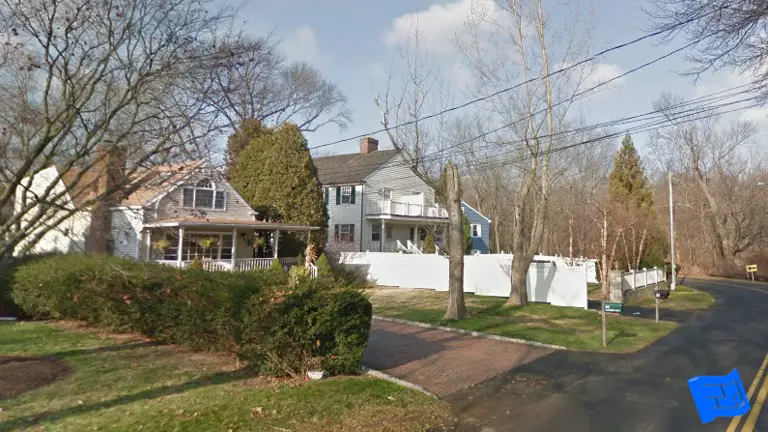 First sight of a suburban home
First sight of a suburban homeThis home is another example of falling in line with expectations established by the journey through the neighborhood.
Notice how the mail box with the house number and the white fence behind is the first sight that's caught of this home rather than a full view of the home.
First sight and garage placement
Let's talk about garages and their role in creating curb appeal.
The image below shows how garage placement has an impact on first sight - particularly first sight of the all important front door.
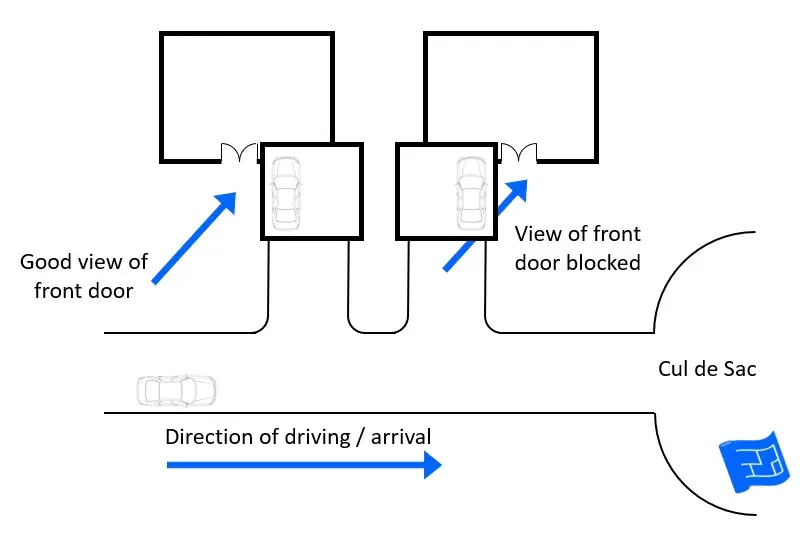
Most homes have a predominant direction that you generally arrive in. Think about the view of your home from the street. What would you rather see? A view of the front door or a view of the garage?
Curb appeal stage 3
Over your property line
At this stage of your approach, you turn from the street and onto your property.
Now that you're on your property, you have the control to design the
space. The aim of the curb appeal design designs is to progress your arrival and welcome your household and your guests with an atmosphere that gives a taste of what will be found inside your home.
Consider how your driveway or path greet the street. Some design elements you could consider are:
- A wall, fence, hedge or other planting to mark the entrance to your property.
- An opening marked by a change (eg fence post, gate post, change in height of planting).
- An overhead element such as an arch can be very effective in creating a feeling of transition.
- Widen your driveway or path as it comes to meet the street. This makes it easier to turn in and out of and makes it feel inviting.
- A change in pavement pattern or material can create the sense of a threshold or bridge into your property.
- Lighting.
Let's have a look at some examples...
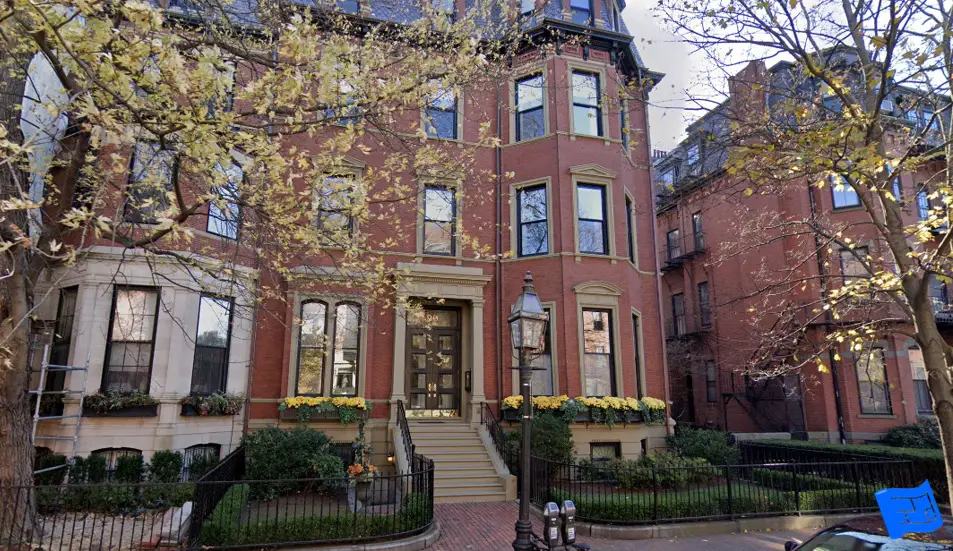 How does this historic home create curb appeal at the property line?
How does this historic home create curb appeal at the property line?Looking at this historic home above, the property line is clearly marked by the black railings set in stone. These are softened with the addition of the low hedging following the line of the railings.
The paving from the sidewalk extends over the property line. This along with the curve in the railings makes the entrance really inviting.
The material changes at the steps creating the sense that we're really on our way in with the yellow flowers drawing us up to the level of the door.
In summary it's very clear where the entrance is and it's very welcoming.
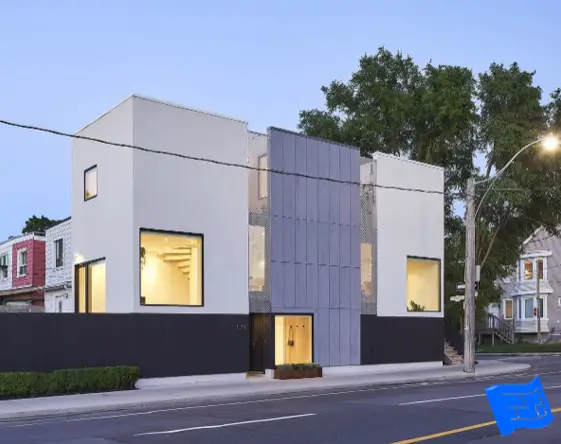 How do you deal with curb appeal when the front of your home is right up onto the sidewalk?
How do you deal with curb appeal when the front of your home is right up onto the sidewalk?In the image above it looks like there's an every so slight set back leaving enough room to soften the fence with some hedging and include a long planter beside the front door.
The house number and the fact that the front door is set back into the house makes the entrance welcoming.
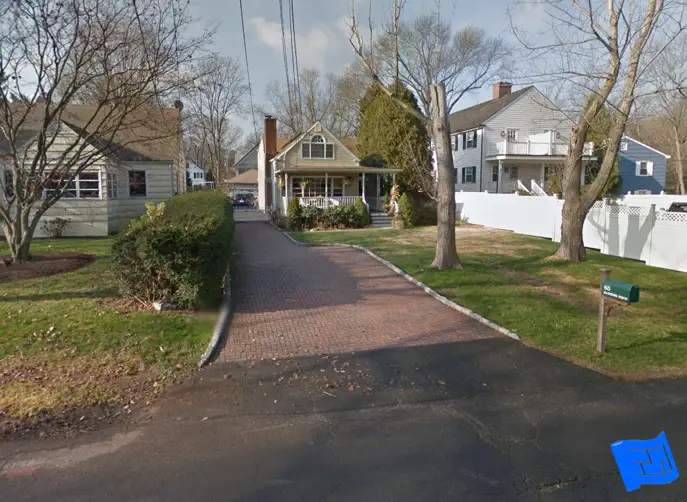 How could the curb appeal be improved at this property line?
How could the curb appeal be improved at this property line?The property line of this property is very open. A fence or planting along the line where the tarmac changes to paving would frame the entrance making it more welcoming and help the change in material which is slightly jarring make more sense as part of an overall sensation of moving from the street and onto the property.
The tree behind the mail box looks like it could use some TLC.
The long white fence would benefit from some low level planting just in front of it to soften the junction between the fence and the grass.
The 'bump out' of the paved area along with the gates across the driveway as it passes the house to the garage beyond make it obvious where guests should park.
Driveways
If your property has a long driveway a great way to create curb appeal is to create a sense of journey up to your home.
Some ideas for this are...
- Rhythmic planting. The grandest form of this is the avenue of trees, and the effect can be replicated on a more modest scale with other plants. A friend of mine has a driveway with lavender bushes which give a great sense of welcome and then there's the wonderful smell.
- Rhythmic lighting along the driveway, creating pools of light to follow.
Let's have a look at some examples with long driveways
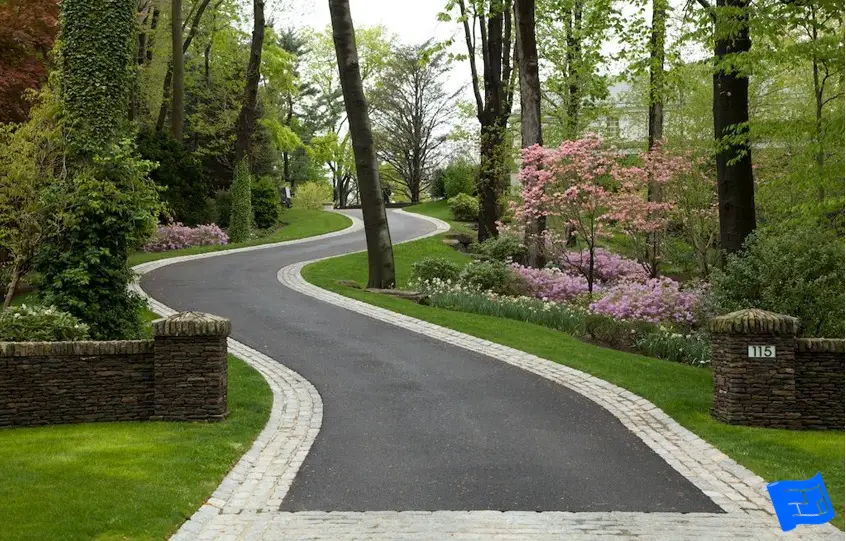 Inviting curved driveway inviting us over the property line
Inviting curved driveway inviting us over the property lineThis is a large lot, where the first sight is more of the driveway, although you get glimpses of the home through the trees.
The curve of the driveway is inviting. It could probably just as easily have been a straight driveway but that would have been far less interesting.
The cobble stones along the front of the property line along with the house number and low stone wall provide a sense of leaving the street and moving up to the home.
The light cobble stones at the edges of the driveway guide the way.
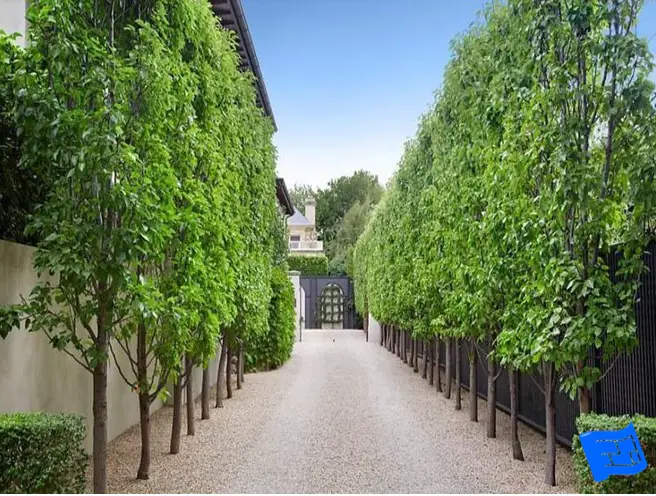 An example of an avenue of trees
An example of an avenue of treesWhat might otherwise have been a long boring driveway is punctuated by an avenue of trees. The trellis design at the the end of the driveway creates a focal point to travel towards.
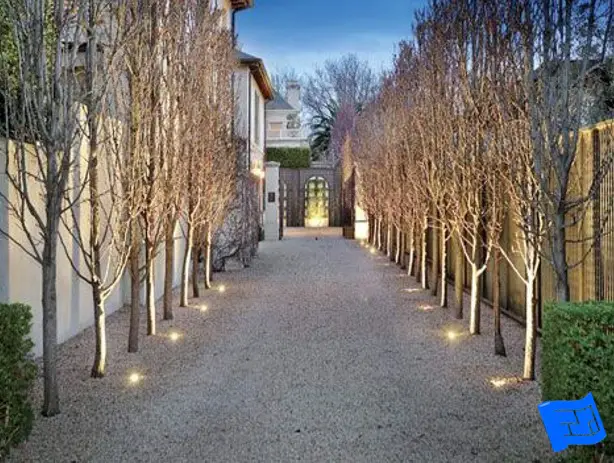 The same driveway with a procession of lights
The same driveway with a procession of lightsCurb appeal stage 4
Parking
Some of you will have room for garaging or parking on your property. Some of you may have no parking on your property.
Consider where you want your guests to park, as well as the members of your household.
It's best if you and your guests can catch a glimpse of the front entry to your home before they park. It's just a better psychological experience because that's where you're aiming to get to after you've parked.
When you first see the entrance door to your home, you and your guests the sense that you have arrived and while the conscious thought probably won't cross your mind, your subconscious mind (and that of your guests) will register where entrance is and feel a sense of satisfaction that a question they didn't really know they had has been answered.
How do you make a parking space obvious? Imagine arriving into a multi-story car park without any lines to show you where to park. A big flat area in front of your home can feel the same way but you're probably not about to paint lines! Here's some tips for signposting where cars should park.
- An area set perpendicular to the driveway.
- Suggest parking bays with planting and lighting.
- Suggest parking bays with changes in paving.
- A widening of the driveway with a signposting element such as plants, lights, change in pavement to define the space.
Below you can see an approach layout with a good approach sequence. Anyone arriving at the home has a smooth journey, both physically and psychologically.
Driving up to the home, the front entrance is visible. Once over the property line, the place to park is easily visible. Seeing as they've already sighted the front door, they know exactly where to go.
The homeowners would also likely use the parking in front of the home.
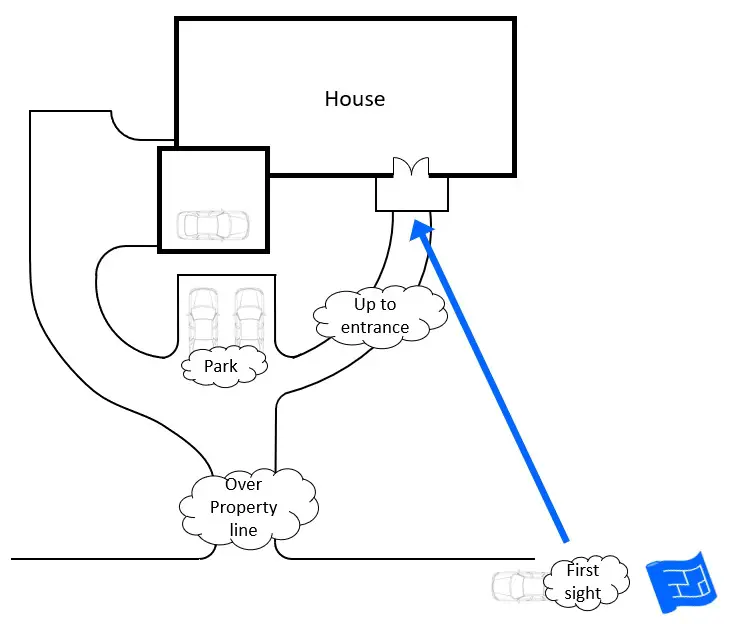
Now let's look at an example where the approach sequence doesn't work so well.
It's more or less the same set up, the only change is the location of the guest parking. It's a small change but it alters the experience of the approach considerably.
Once the guest arrives over the property line they may not be sure where to park. Once they have parked, they have a long way to go back to the front door. If there's an entrance at the back of the house near the garage, they may be tempted to knock on that door instead.
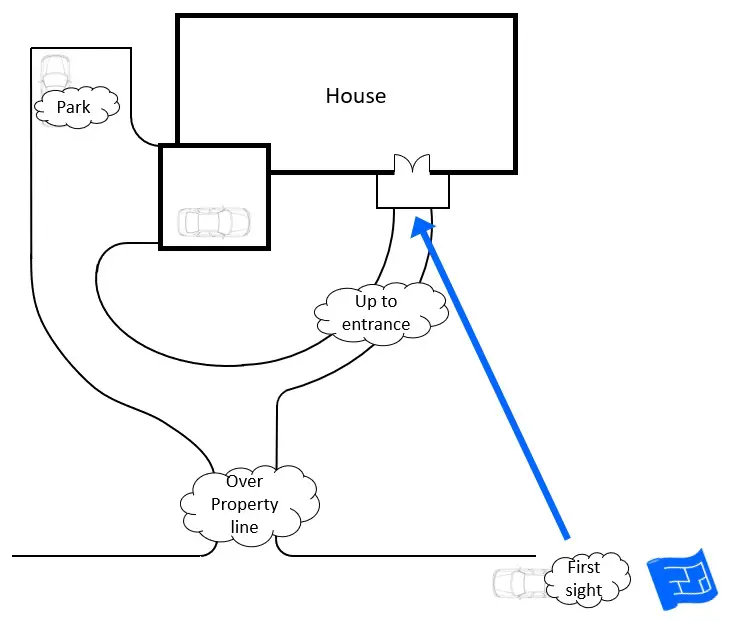
Curb appeal stage 5
Up to your entrance
This phase is where you and your guests approach the entrance. The area immediately in front of the entrance benefits from some design elements to make it a transition between the approach to the door, and going through the entrance itself.
These design elements might be:
- A step or steps
- A change in paving
- A porch or other overhead element to protect from the weather
- A set of planters either side of the door
- Lighting
Preserving privacy
When you're designing the journey from the street to your parking area or your front door, of from your parking are to your front door consider the privacy of your home.
Does the journey pass spaces of your home that you want to keep private? It's very tempting to start to design the windows to be smaller or higher in order to restrict the view. Try to find other solutions first rather than compromising the light in your room. Try thinking about...
- landscaping
- the distance away from the window
- the angle that people will see into the room.
Curb appeal - the front façade
So let's finish with the front façade - the view everybody seems to be obsessed with when thinking about how to create curb appeal.
I hope I've convinced you that there's much more to creating curb appeal than simply looking at the front façade of your home. That said here's some things to be on the look out for when considering the front façade of your home.
- Is it obvious where the entrance is?
- Think about the amount of wall / window you see and the amount of roof that you see.
- Are your windows arranged in a pleasing way? They might be geometrical or arranged in a more avant-garde fashion.
- How do the materials contribute to the aesthetic of the facade?
- Are down pipes in a sensible position without detracting from the appearance of your home?
- How could garden planting or window boxes contribute to the curb appeal?
- Does the color of the paintwork make sense for the facade?
- Is there an opportunity to introduce fencing or railings to add to the curb appeal?
Key takaways
So, there you have it. Now you know how to create curb appeal.
The key is to think of 'curb appeal' more as 'approach appeal' and it's 5 stages:
- Neighborhood approach
- First sight
- Over the property line
- Parking
- Approaching the entrance
Keep in mind that it's not just what you see - it's also how you're made to feel and where you're made to move - the whole experience.

